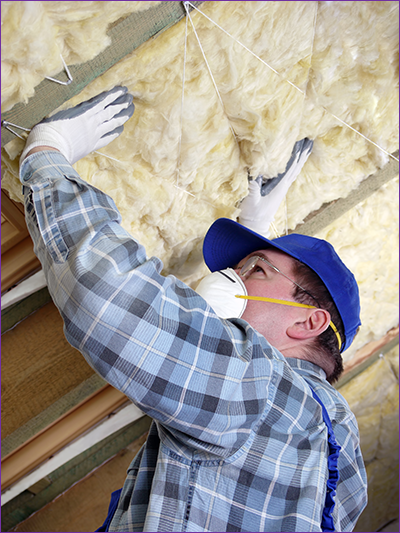Loft and Cavity Wall Insulation
Thinking about buying a house with spray foam insulation?
It might be marketed as an energy saver, but it could block your mortgage application!
Read our article on whether you should buy a house with foam insulation or not.
Loft and cavity walls - what materials are used to insulate them?
- 1
- Batt or blanket - either glass, mineral or rock fibre or foil-backed felt. Considered easy to install without requiring a professional and works for easily accessible spaces, (even for insulating exposed cavity walls) . Materials such as glass fibre can serious irritate the skin however so care should be exercised when fitting.
- Loose-fill - granular or lightweight materials used e.g. cork, mineral wool, cellulose fibre, recycled newspaper. Protective clothing and safety equipment is needed to install it and materials can loosen if a loft is particularly draughty.
- Sheet - these are firm and often fire- and moisture resistant. The material is good for insulating the sloping side of a roof. Sheets may be fire- and/or moisture-resistant. This approach is comparatively more expensive than for the materials above.
- Blown-fibre - gaps between joists are filled with fibre insulation blown into the spaces by a professional contractor. The process is quite rapid and is a solution when a loft is difficult to access but it is normally the most expensive material and method.
- 2
- Mineral wool/rockwool - cheapest and quickest to install; but its lifespan is apparently less than for other materials.
- Polystyrene Beads - these insulate more effectively than mineral wool does but they are more expensive and great care has to be taken to ensure there are no gaps in them to guard against future damp penetration.
- Foam - either polyurethane or urea formaldehyde. The material can be highly effective but it can take up to 3 days for a professional to install and it normally costs the most out of all the materials. Foam also breaks down over time.

What is the cost of loft and cavity wall insulation?
Are there any Government or other schemes which either subsidise fitting insulation or provide free grants?
Andrew started his career in 2000 working within conveyancing solicitor firms and grew hands-on knowledge of a wide variety of conveyancing challenges and solutions. After helping in excess of 50,000 clients in his career, he uses all this experience within his article writing for SAM, mainstream media and his self published book How to Buy a House Without Killing Anyone.
Caragh is an excellent writer and copy editor of books, news articles and editorials. She has written extensively for SAM for a variety of conveyancing, survey, property law and mortgage-related articles.








